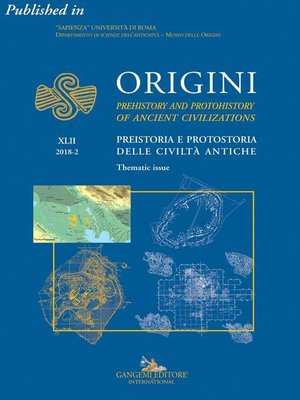The urbanization of the Southern Levant in its Near Eastern setting
ebook ∣ Published in Origini n. XLII/2018. Rivista annuale del Dipartimento di Scienze dell'Antichità – "Sapienza" Università di Roma | Preistoria e protostoria delle civiltà antiche – Prehistory and protohistory of ancient civilizations
By Pierre de Miroschedji

Sign up to save your library
With an OverDrive account, you can save your favorite libraries for at-a-glance information about availability. Find out more about OverDrive accounts.
Find this title in Libby, the library reading app by OverDrive.



Search for a digital library with this title
Title found at these libraries:
| Library Name | Distance |
|---|---|
| Loading... |
Urbanization occurred in the southern Levant at the end of the fourth millennium BCE in a process of settlement coalescence achieved under conditions of territorial stress and insecurity. The constituent households were woven into the urban fabric thanks to large-scale cooperative labor. The construction of monumental fortifications materialized the new aggregated community and thereby created a city. Although the mode of social organization was corporate in most settlements, it was exclusionary in some major cities as indicated by the appearance of palaces, which imply the existence of a king alongside elders. The variety of local situations resulted in a wide diversity of settlement forms. The common denominator of these settlements was not urbanism sensu stricto but the existence of an autonomous political and territorial organization, i.e. a city-state. This observation applies as well to a large number of urban settlements of the ancient Near East and Mediterranean, which differ sharply from those of the Syro-Mesopotamian sphere.







